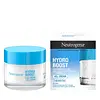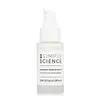Neutrogena Hydro Boost Gel Crème Versus Isomers Skincare Laboratories Ceramide Barrier Relief Protective Skin Cream
What's inside
What's inside
 Key Ingredients
Key Ingredients

 Benefits
Benefits

 Concerns
Concerns

 Ingredients Side-by-side
Ingredients Side-by-side

Water
Skin ConditioningGlycerin
HumectantIsopropyl Palmitate
EmollientCetyl Alcohol
EmollientCetearyl Olivate
Sorbitan Olivate
EmulsifyingAlanine
MaskingMaltose
MaskingGlycine
BufferingAllantoin
Skin ConditioningLidocaine Hcl
Arginine
MaskingSerine
MaskingProline
Skin ConditioningThreonine
Ethylhexylglycerin
Skin ConditioningPentylene Glycol
Skin ConditioningCeramide NP
Skin ConditioningTropolone
Skin ConditioningSodium Hyaluronate
Humectant1,2-Hexanediol
Skin ConditioningCaprylyl Glycol
EmollientTrehalose
HumectantBetaine
HumectantUrea
BufferingFructose
HumectantGlucose
HumectantPCA
HumectantSodium PCA
HumectantGlutamic Acid
HumectantSodium Lactate
BufferingPalmitic Acid
EmollientStearic Acid
CleansingDimethicone
EmollientSodium Chloride
MaskingPolyacrylate Crosspolymer-6
Emulsion StabilisingC10-30 Cholesterol/Lanosterol Esters
EmulsifyingT-Butyl Alcohol
PerfumingSodium Hydroxide
BufferingCitric Acid
BufferingTocopherol
AntioxidantWater, Glycerin, Isopropyl Palmitate, Cetyl Alcohol, Cetearyl Olivate, Sorbitan Olivate, Alanine, Maltose, Glycine, Allantoin, Lidocaine Hcl, Arginine, Serine, Proline, Threonine, Ethylhexylglycerin, Pentylene Glycol, Ceramide NP, Tropolone, Sodium Hyaluronate, 1,2-Hexanediol, Caprylyl Glycol, Trehalose, Betaine, Urea, Fructose, Glucose, PCA, Sodium PCA, Glutamic Acid, Sodium Lactate, Palmitic Acid, Stearic Acid, Dimethicone, Sodium Chloride, Polyacrylate Crosspolymer-6, C10-30 Cholesterol/Lanosterol Esters, T-Butyl Alcohol, Sodium Hydroxide, Citric Acid, Tocopherol
Water
Skin ConditioningCalophyllum Inophyllum Seed Oil
AntimicrobialCaprylic/Capric Triglyceride
MaskingC12-15 Alkyl Benzoate
AntimicrobialGlyceryl Stearate
EmollientCetearyl Alcohol
EmollientMethyl Glucose Sesquistearate
EmollientUrea
BufferingPropanediol
SolventGlycerin
HumectantSodium Hyaluronate
HumectantDimethicone
EmollientSaccharide Isomerate
HumectantSodium Phosphate
BufferingGlyceryl Caprylate
EmollientSodium PCA
HumectantOleyl Alcohol
EmollientGlycine Soja Sterols
EmollientTocopherol
AntioxidantLactic Acid
BufferingBetaine
HumectantSorbitol
HumectantSerine
MaskingGlycine
BufferingGlutamic Acid
HumectantAlanine
MaskingArginine
MaskingThreonine
Manganese PCA
HumectantProline
Skin ConditioningCeteareth-25
CleansingCetyl Alcohol
EmollientMagnesium PCA
HumectantDisodium Phosphate
BufferingCeramide EOP
Skin ConditioningZinc PCA
HumectantCeramide Eos
Skin ConditioningPotassium Lactate
BufferingCeramide NP
Skin ConditioningLysine
Skin ConditioningCeramide Ns
Skin ConditioningDioscorea Villosa Root Extract
Skin ConditioningCeramide AP
Skin ConditioningCaprooyl Phytosphingosine
Skin ConditioningCaprooyl Sphingosine
Skin ConditioningHydroxyacetophenone
AntioxidantBehenic Acid
CleansingCholesterol
EmollientXanthan Gum
EmulsifyingWater, Calophyllum Inophyllum Seed Oil, Caprylic/Capric Triglyceride, C12-15 Alkyl Benzoate, Glyceryl Stearate, Cetearyl Alcohol, Methyl Glucose Sesquistearate, Urea, Propanediol, Glycerin, Sodium Hyaluronate, Dimethicone, Saccharide Isomerate, Sodium Phosphate, Glyceryl Caprylate, Sodium PCA, Oleyl Alcohol, Glycine Soja Sterols, Tocopherol, Lactic Acid, Betaine, Sorbitol, Serine, Glycine, Glutamic Acid, Alanine, Arginine, Threonine, Manganese PCA, Proline, Ceteareth-25, Cetyl Alcohol, Magnesium PCA, Disodium Phosphate, Ceramide EOP, Zinc PCA, Ceramide Eos, Potassium Lactate, Ceramide NP, Lysine, Ceramide Ns, Dioscorea Villosa Root Extract, Ceramide AP, Caprooyl Phytosphingosine, Caprooyl Sphingosine, Hydroxyacetophenone, Behenic Acid, Cholesterol, Xanthan Gum
 Reviews
Reviews

Ingredients Explained
These ingredients are found in both products.
Ingredients higher up in an ingredient list are typically present in a larger amount.
Alanine is an amino acid and is already found in the human body. Our skin uses alanine to build collagen, elastin, and keratin.
Arginine is an amino acid that is important for human development. Your body uses is it to produce hair keratin and skin collagen.
As a cosmetic ingredient, Arginine has antioxidant properties and can also help repair damaged skin. This ingredient is derived either synthetically or from animals.
Arginine isn't fungal acne safe when used in the presence of other lipids (fats, fatty acids, oils, esters, etc). Oils and fats occur naturally within the skin, so take caution when using Arginine if you're prone to fungal acne.
Learn more about ArginineBetaine is a common humectant (a substance that promotes retention of moisture). It's known to be gentle on the skin and can help balance hydration.
This ingredient is best for improving hydration and soothing irritated skin. Studies also show it helps even out skin tone.
Fun fact: Betaine is naturally created in the skin and body. The kind found within cosmetic products can be either plant-derived or synthetic.
Another name for betaine is trimethylglycine.
Learn more about BetaineCeramide NP is a type of ceramide and formally known as ceramide 3.
Ceramides are intercellular lipids naturally found in our skin that bonds dead skin cells together to create a barrier. They are known for their ability to hold water and thus are a great ingredient for dry skin.
Ceramides are an important building block for our skin barrier. A stronger barrier helps the skin look more firm and hydrated. By bolstering the skin ceramides act as a barrier against irritating ingredients. This can help with inflammation as well.
If you would like to eat ceramides, sweet potatoes contain a small amount.
Read more about other common types of ceramides here:
Ceramide AP
Ceramide EOP
Cetyl Alcohol is a fatty alcohol. Fatty Alcohols are most often used as an emollient or to thicken a product.
Its main roles are:
Though it has "alcohol" in the name, it is not related to denatured alcohol or ethyl alcohol.
The FDA allows products labeled "alcohol-free" to have fatty alcohols.
Learn more about Cetyl AlcoholDimethicone is a type of synthetic silicone created from natural materials such as quartz.
What it does:
Dimethicone comes in different viscosities:
Depending on the viscosity, dimethicone has different properties.
Ingredients lists don't always show which type is used, so we recommend reaching out to the brand if you have questions about the viscosity.
This ingredient is unlikely to cause irritation because it does not get absorbed into skin. However, people with silicone allergies should be careful about using this ingredient.
Note: Dimethicone may contribute to pilling. This is because it is not oil or water soluble, so pilling may occur when layered with products. When mixed with heavy oils in a formula, the outcome is also quite greasy.
Learn more about DimethiconeGlutamic Acid is an amino acid that is found in all living organisms. Our bodies use this to help nerve cells in the brain communicate with other cells.
In cosmetics, glutamic acid is a famous humectant. It draws water from the air to your skin, keeping your skin hydrated (like hyaluronic acid).
An in-vitro study from 2024 found glutamic acid to play a role in inhibiting inflammation and thus a potential skin-soothing ingredient.
Other studies show it to be have potential wound healing, skin barrier repair, and hair growth properties.
Glutamic acid has poor solubility in water and other solvents.
Learn more about Glutamic AcidGlycerin is already naturally found in your skin. It helps moisturize and protect your skin.
A study from 2016 found glycerin to be more effective as a humectant than AHAs and hyaluronic acid.
As a humectant, it helps the skin stay hydrated by pulling moisture to your skin. The low molecular weight of glycerin allows it to pull moisture into the deeper layers of your skin.
Hydrated skin improves your skin barrier; Your skin barrier helps protect against irritants and bacteria.
Glycerin has also been found to have antimicrobial and antiviral properties. Due to these properties, glycerin is often used in wound and burn treatments.
In cosmetics, glycerin is usually derived from plants such as soybean or palm. However, it can also be sourced from animals, such as tallow or animal fat.
This ingredient is organic, colorless, odorless, and non-toxic.
Glycerin is the name for this ingredient in American English. British English uses Glycerol/Glycerine.
Learn more about GlycerinThis ingredient is an amino acid that helps build proteins and moisturizes skin. It is already present in our skin as our bodies produce them naturally.
Glycine already plays a role in helping keep our skin moisturized as amino acids transport moisture throughout our skin.
As collagen is made up of glycine and other amino acids, it is believed glycine may help our skin produce more collagen.
Learn more about GlycineProline is an amino-acid. It helps moisturize the skin and plays an important role in creating proteins.
Our skin uses proline as one of the building blocks for producing collagen.
In medicine, proline is used as an osmoprotectant. This means it helps prevent oxidative degradation in other drugs.
Our bodies are able to produce proline naturally, but certain conditions may inhibit this production. In that case, proline can be obtained from eating egg whites, soy protein, dairy products, asparagus, mushrooms, and seaweed.
Learn more about ProlineSerine is an amino acid naturally found in our body. Our bodies use amino acids to create protein.
Amino-acids help give keep our skin hydrated. They play an important role in the skin barrier, which keeps the skin plump and firm.
Serine is a non-essential amino acid, meaning we don't need to obtain it from eating foods.
Learn more about SerineSodium Hyaluronate is hyaluronic acid's salt form. It is commonly derived from the sodium salt of hyaluronic acid.
Like hyaluronic acid, it is great at holding water and acts as a humectant. This makes it a great skin hydrating ingredient.
Sodium Hyaluronate is naturally occurring in our bodies and is mostly found in eye fluid and joints.
These are some other common types of Hyaluronic Acid:
Learn more about Sodium HyaluronateSodium PCA is the sodium salt of pyroglutamic acid. It is naturally occurring in our skin's natural moisturizing factors where it works to maintain hydration.
The PCA stands for pyrrolidone carboxylic acid, a natural amino acid derivative.
This ingredient has skin conditioning, anti-inflammatory, and humectant properties. Humectants help hydrate your skin by drawing moisture from the air. This helps keep your skin moisturized.
Learn more about Sodium PCAThreonine is an amino-acid. It helps hydrate the skin and has antioxidant benefits.
Our skin uses threonine for creating collagen and elastin. Humans are not able to create threonine and must get it through eating foods such as fish, lentils, poultry, sesame seeds, and more.
Tocopherol (also known as Vitamin E) is a common antioxidant used to help protect the skin from free-radicals and strengthen the skin barrier. It's also fat soluble - this means our skin is great at absorbing it.
Vitamin E also helps keep your natural skin lipids healthy. Your lipid skin barrier naturally consists of lipids, ceramides, and fatty acids. Vitamin E offers extra protection for your skin’s lipid barrier, keeping your skin healthy and nourished.
Another benefit is a bit of UV protection. Vitamin E helps reduce the damage caused by UVB rays. (It should not replace your sunscreen). Combining it with Vitamin C can decrease sunburned cells and hyperpigmentation after UV exposure.
You might have noticed Vitamin E + C often paired together. This is because it is great at stabilizing Vitamin C. Using the two together helps increase the effectiveness of both ingredients.
There are often claims that Vitamin E can reduce/prevent scarring, but these claims haven't been confirmed by scientific research.
Learn more about TocopherolUrea is also called carbamide and is the diamide of carbonic acid. In cosmetics, urea is used to hydrate the skin. It also provides exfoliation in higher concentrations.
As a humectant, urea helps draw moisture from the air and from deep within the skin. This helps hydrate your skin. Studies show urea is an effective moisturizer for dry skin conditions. 40% urea is typical in medications for treating eczema and other skin conditions.
Urea has the strongest exfoliation effect in concentrations higher than 10%. It is a keratolytic agent, meaning it breaks down the keratin protein in the top layer of skin. This helps remove dead skin cells and flaking skin.
In medicine, urea has been shown to help increase the potency of other ingredients, such as fungal treatments.
Humans and animals use urea to metabolize nitrogen-containing compounds. Urea is highly soluble in water. Once dissolved, it is neither acidic nor alkaline.
Learn more about UreaWater. It's the most common cosmetic ingredient of all. You'll usually see it at the top of ingredient lists, meaning that it makes up the largest part of the product.
So why is it so popular? Water most often acts as a solvent - this means that it helps dissolve other ingredients into the formulation.
You'll also recognize water as that liquid we all need to stay alive. If you see this, drink a glass of water. Stay hydrated!
Learn more about Water